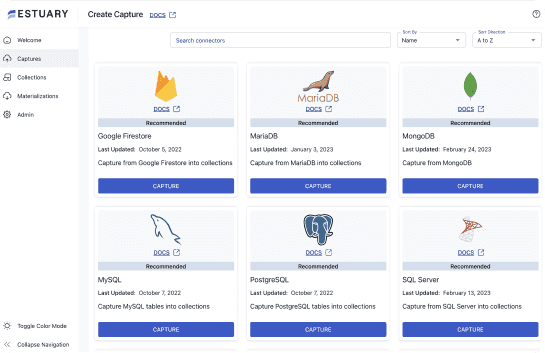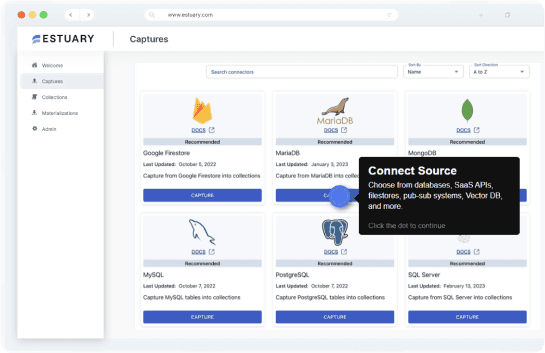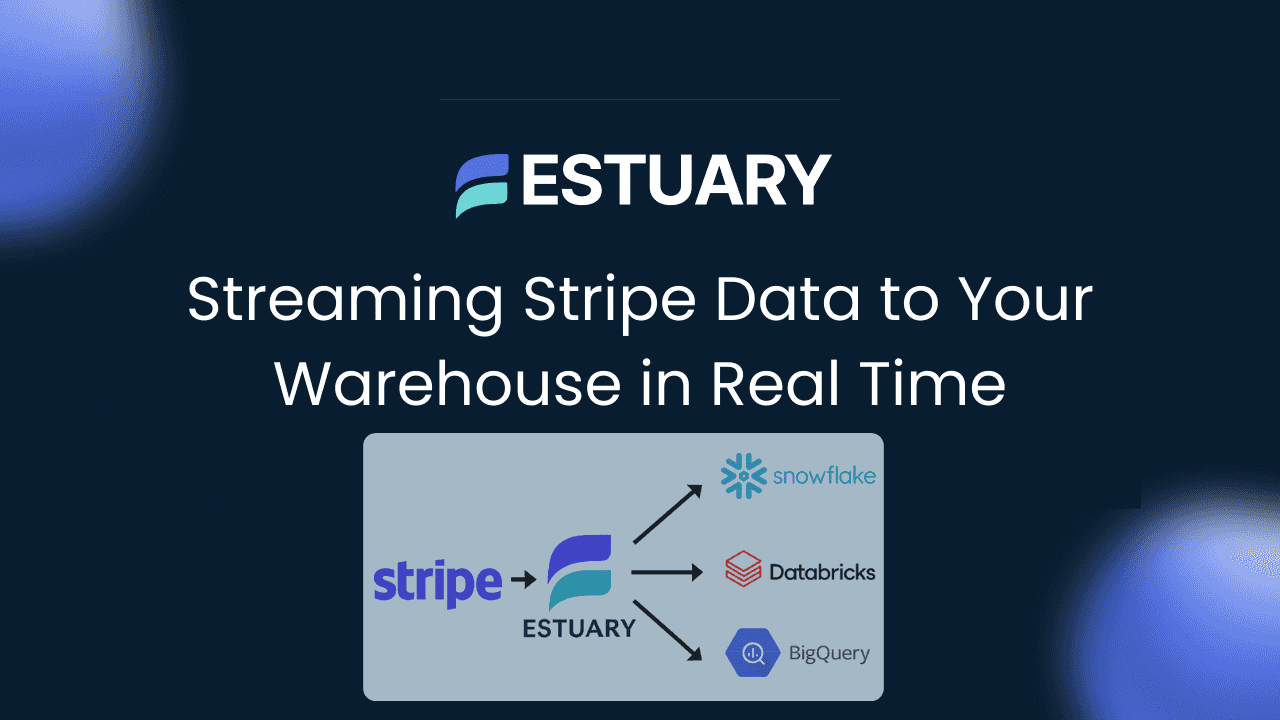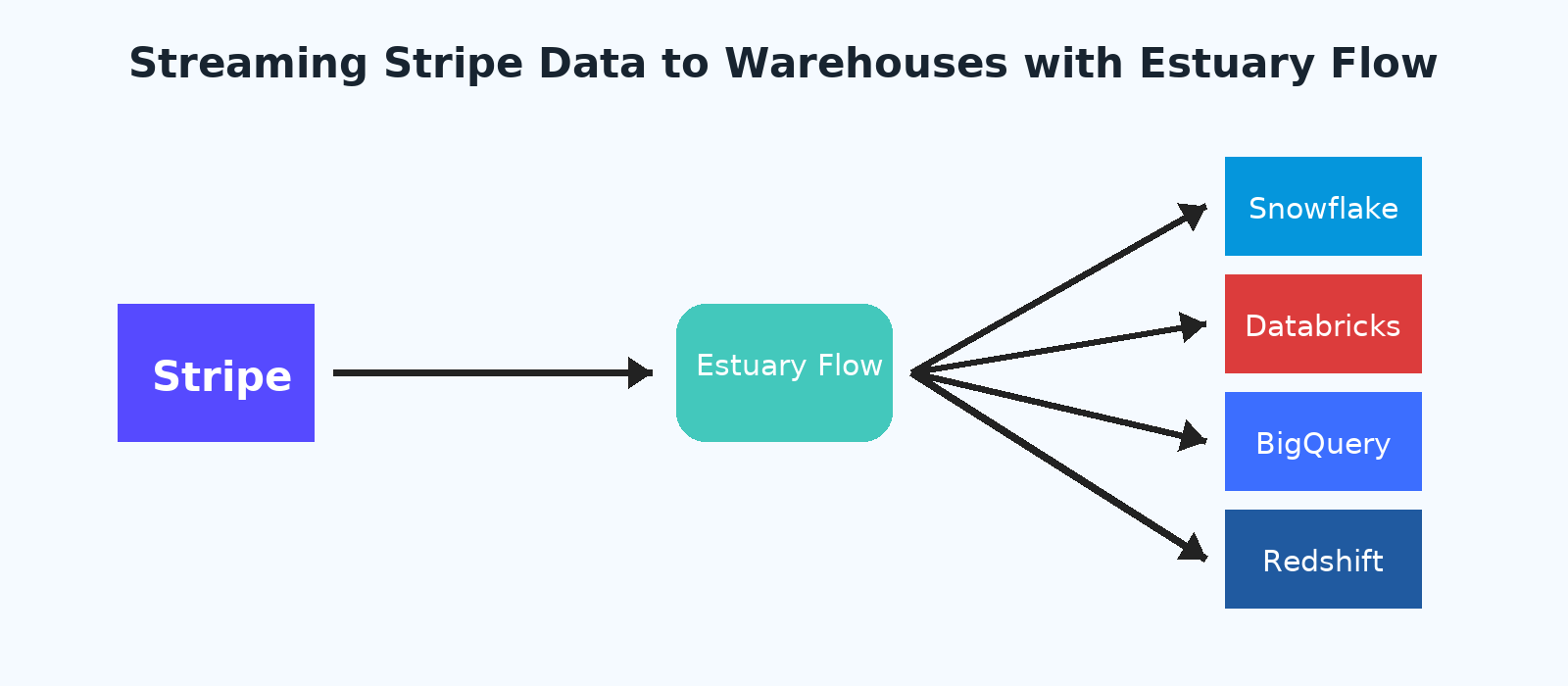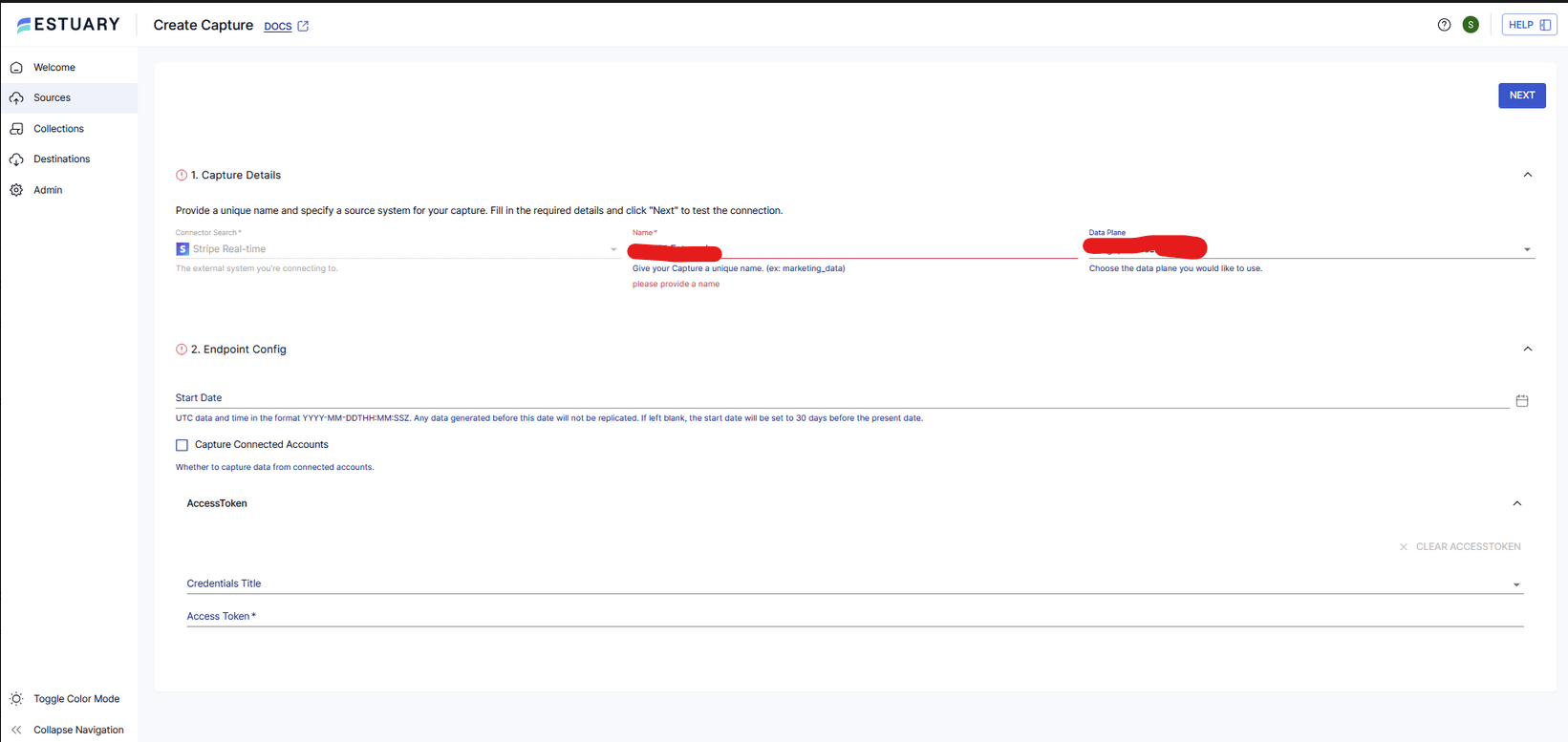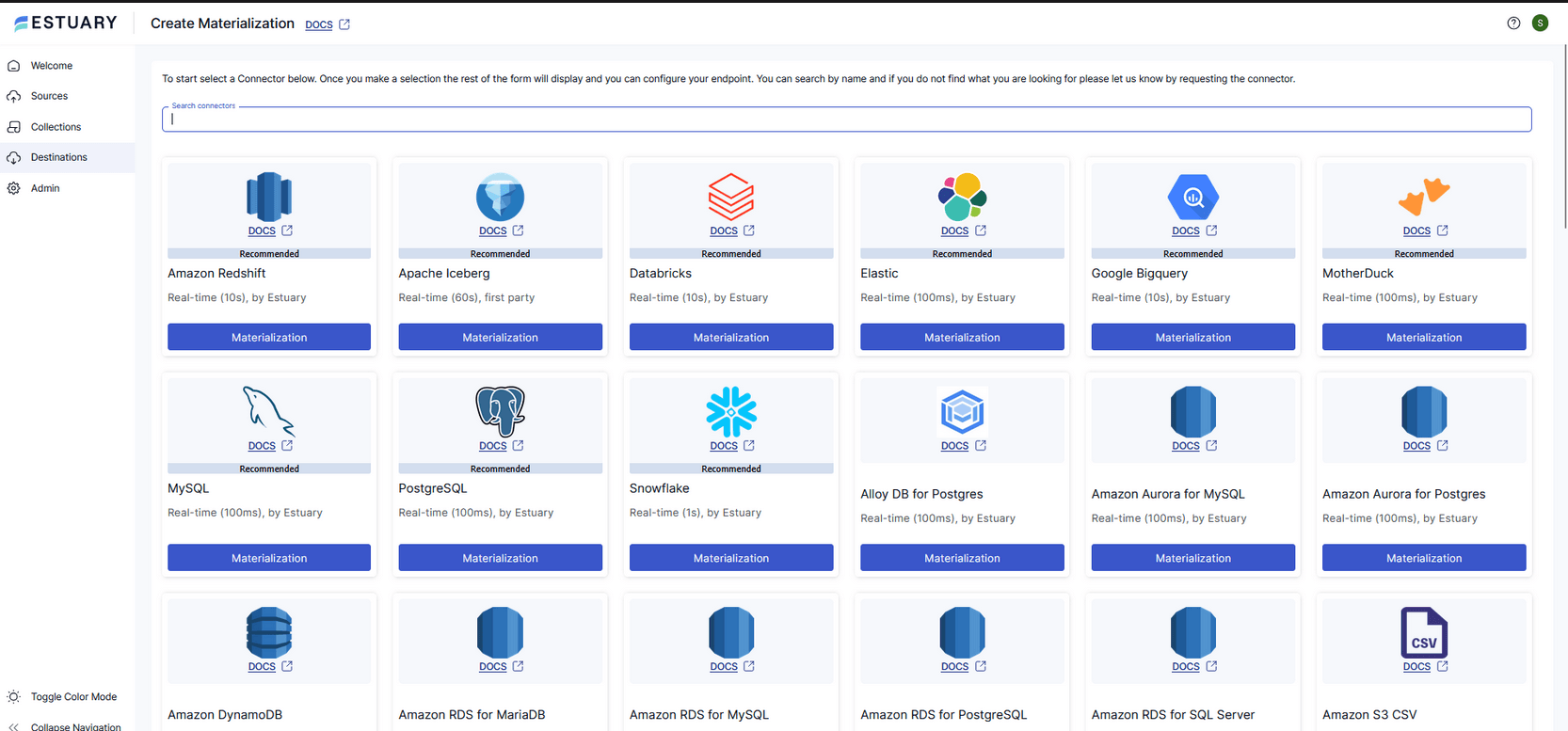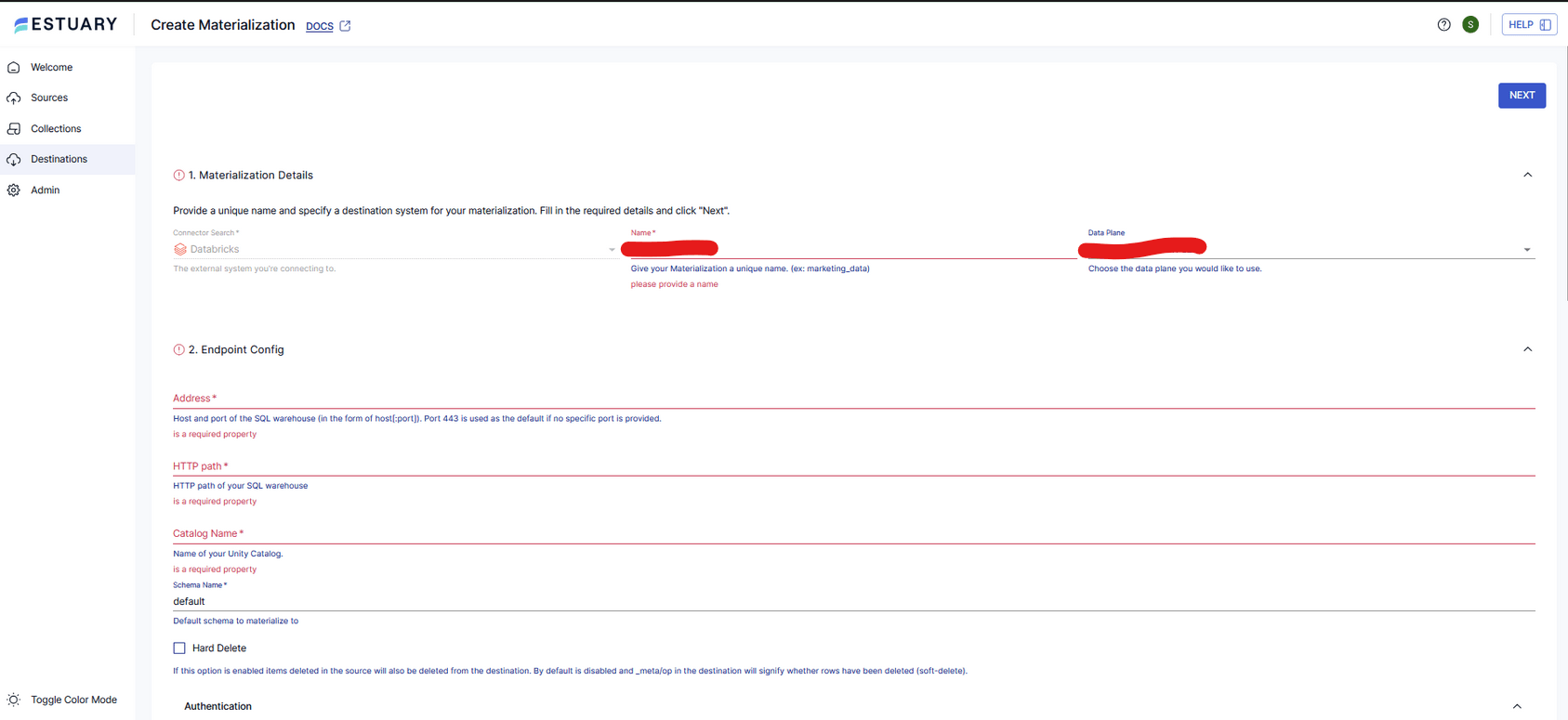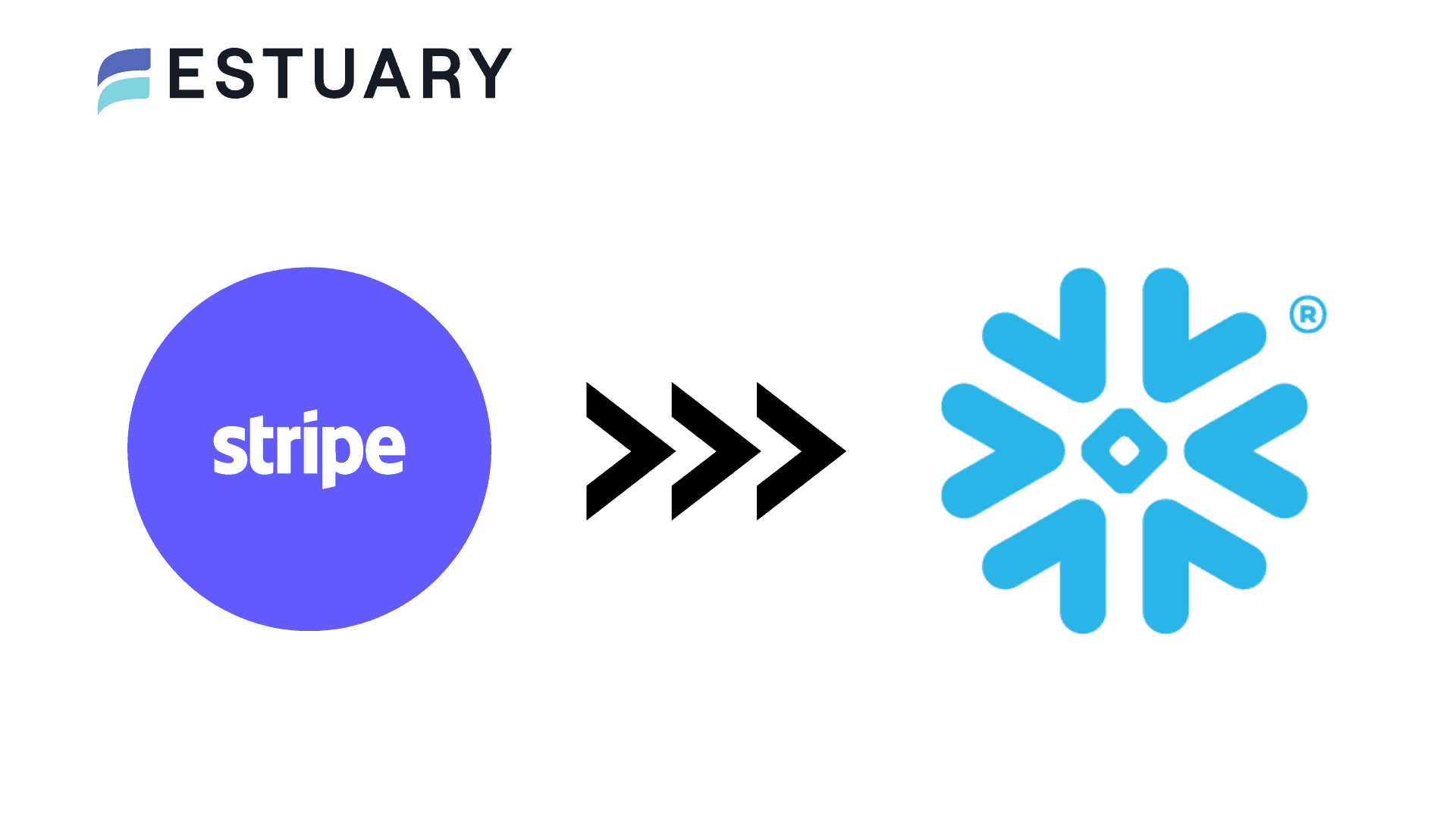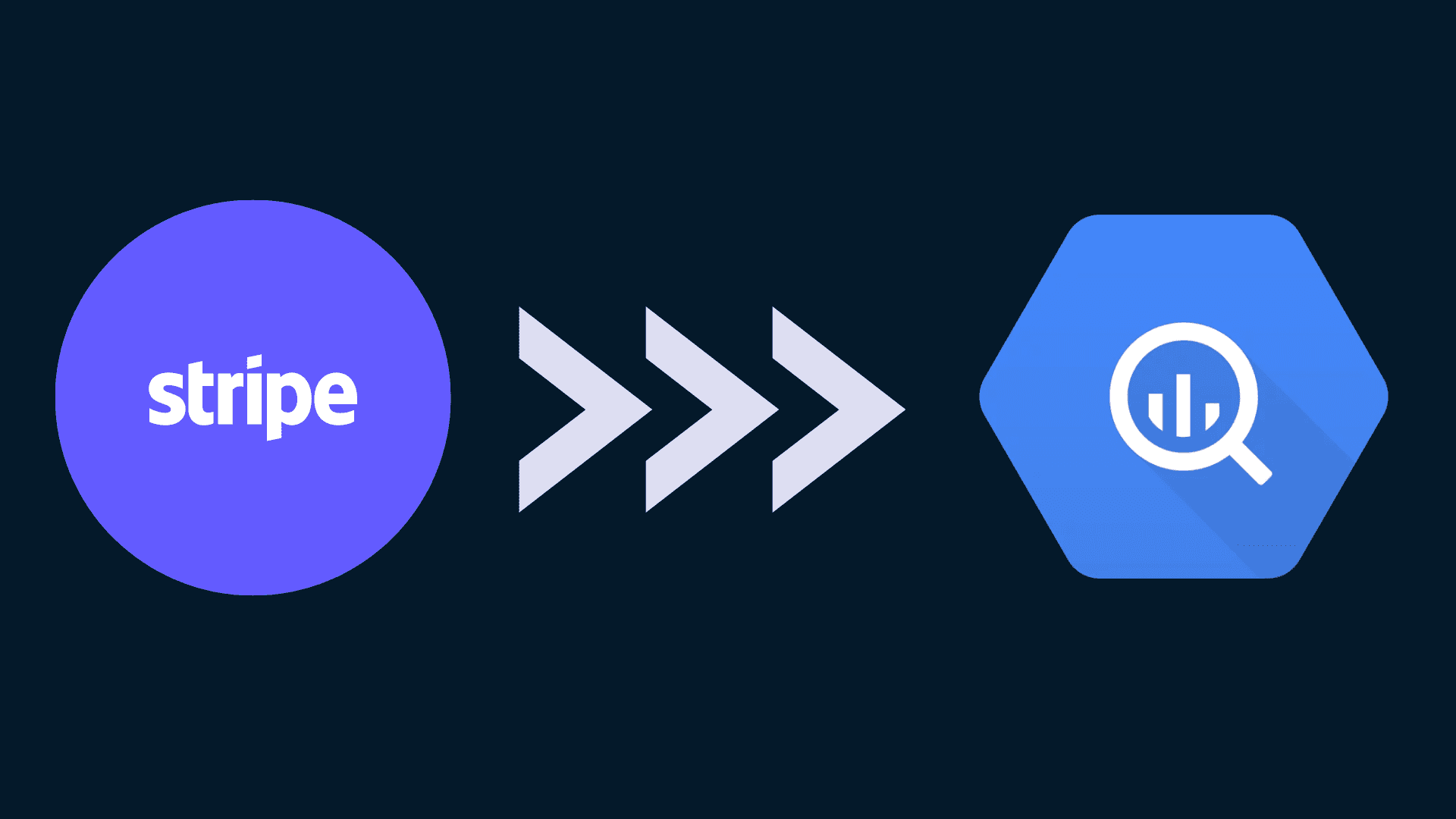
Why Automating Stripe Data Matters
If your business runs on Stripe, your payments data is the lifeblood of your operations. It holds the answers to critical questions:
- How much revenue did we process today?
- Which subscriptions are up for renewal?
- Are refunds and disputes trending up?
The challenge is that this data often lives in Stripe alone, siloed away from the rest of your analytics stack. Exporting CSVs or relying on batch ETL tools means your dashboards are always stale, hours or even days behind reality.
For finance teams, data engineers, and growth analysts, that delay can cost real money. Think slower reporting cycles, lagging churn insights, and reactive fraud detection.
That’s why more teams are choosing to automate their Stripe data pipelines into a central warehouse like Snowflake, BigQuery, Redshift, or Databricks. With real-time streaming, you get always-fresh data that fuels accurate reporting, smarter forecasting, and proactive decisions.
In this guide, we’ll walk through how to set up a Stripe to warehouse pipeline with Estuary Flow in just a few steps.
Key Takeaways
- Manually exporting Stripe data slows down reporting and decision-making.
- Real-time streaming pipelines keep your warehouse up to date with every charge, refund, and payout.
- Estuary Flow’s Stripe Real-time connector makes setup simple with no code required.
- Data can be streamed into warehouses like Snowflake, BigQuery, Redshift, or Databricks.
- This guide walks through a Stripe to Databricks pipeline step by step.
What is the Stripe Real-time Connector?
The Stripe Real-time connector in Estuary Flow is built to continuously capture data from Stripe’s API and stream it directly into collections that you can materialize in your warehouse. Instead of waiting for scheduled exports or building custom API scripts, the connector ensures your Stripe data is always up to date.
Supported Data Resources
Out of the box, the connector can capture a wide range of Stripe objects, including:
- Core financial records: charges, payouts, balance transactions, refunds, application fees
- Customer and subscription data: customers, invoices, invoice items, subscription items, subscriptions, plans
- Commerce and checkout events: checkout sessions, payment intents, payment methods, disputes, early fraud warnings
- Supporting resources: coupons, promotion codes, credit notes, products, files, reviews
Each resource is mapped to a separate collection in Estuary Flow, which means you can selectively sync just the data you need or bring in everything for a complete financial picture.
Connected Accounts Support
For Stripe Connect users, the connector can also capture data across connected accounts. By enabling the capture_connected_accounts setting, each record will include an account_id field so you can distinguish between different accounts in your warehouse.
Why This Matters
Financial data is only as useful as it is fresh. The Stripe Real-time connector ensures that events like new payments, refunds, or disputes appear in your warehouse as soon as they happen, giving finance, operations, and data teams the agility to act in the moment instead of waiting until the next reporting cycle.
How Stripe Data Flows into Your Warehouse
When you set up a pipeline with Estuary Flow, Stripe becomes the source, and your warehouse acts as the destination. The connector continuously listens for new events in Stripe and publishes them into Flow collections. These collections are then materialized into tables in your chosen warehouse.
At a high level, the flow looks like this:
Stripe → Estuary Flow → Warehouse (Snowflake, BigQuery, Redshift, Databricks)
- Stripe: Generates events such as charges, invoices, payouts, and subscriptions.
- Estuary Flow: Captures these events in real time, validates them against schemas, and stores them in collections.
- Warehouse: Tables are updated continuously, so your analytics and dashboards always reflect the latest financial activity.
This architecture eliminates the lag that comes with manual exports or nightly batch jobs. Instead of working with outdated numbers, your teams get a live view of revenue, churn, and cash flow
Prerequisites
Before setting up your Stripe to warehouse pipeline with Estuary Flow, make sure you have the following:
- Stripe API Key
- Found in the Stripe Developer Dashboard.
- Keys start with sk_live_ for production or sk_test_ for testing.
- Estuary Flow Account
- Sign up or log in at Estuary.
- Access to the Flow web app to create captures and materializations.
- Warehouse Credentials
- For this guide, we’ll use Databricks as the destination.
- You will need:
- Workspace URL and HTTP path
- Catalog name and schema name
- A Personal Access Token for authentication
With these pieces ready, you can configure your first Stripe capture and start streaming data directly into your warehouse.
Step 1: Create a Stripe Capture
In the Estuary Flow web app, start by creating a new capture. This is where you’ll connect your Stripe account and decide which resources you want to bring in.
- From the Flow dashboard, click Source →New Capture.
- Search for and select Stripe Real-time from the connector list.
- Fill in the required fields:
- Capture Name: A unique name to identify your pipeline (for example, stripe-charges).
- Access Token: Paste your Stripe API key (sk_live_... or sk_test_...).
- Start Date: Choose the date from which you want to start syncing data. If not specified, Flow defaults to 30 days before the present.
- Capture Connected Accounts: Enable this option if you need to collect data from Stripe Connected Accounts.
- Click Next to test the connection. If the API key is valid, Flow will confirm the available Stripe resources you can capture.
Once the capture is saved, Estuary Flow begins listening to Stripe’s API in real time, automatically creating collections for each resource you select.
Step 2: Choose a Destination Warehouse
After creating the Stripe capture, the next step is to decide where your data should live. Estuary Flow supports a wide range of destinations, including:
- Snowflake
- Google BigQuery
- Amazon Redshift
- Databricks
For this guide, we’ll use Databricks as the example warehouse.
- In the Flow web app, navigate to Destination → Create Materialization.
- Select Databricks from the list of available destinations.
- You’ll be prompted to provide configuration details for your Databricks workspace (covered in the next step).
This step ensures that the collections created from your Stripe capture will be continuously synced as tables in your chosen warehouse.
Step 3: Configure the Databricks Materialization
With Databricks selected as the destination, you’ll now provide connection details so Estuary Flow can continuously write Stripe data into your workspace.
- In the Databricks configuration form, fill in the following fields:
- Workspace URL and HTTP Path: These identify your Databricks instance.
- Catalog Name and Schema Name: Where the Stripe collections will be stored as tables.
- Personal Access Token (PAT): Used to authenticate with your Databricks account.
- Map the Stripe collections created in Step 1 (charges, customers, invoices, refunds, etc.) to tables in Databricks. By default, each Stripe resource will be assigned its own table.
- Save the materialization. Estuary Flow will immediately begin streaming your Stripe events into Databricks, creating tables that stay in sync in real time.
Step 4: Validate the Pipeline
Once your Databricks materialization is saved, it’s time to confirm that data is flowing as expected.
- In the Flow dashboard, open your Stripe capture and check the status. You should see documents being published into the associated collections.
- Switch to your Databricks workspace and run a simple query, such as:
plaintextSELECT *
FROM charges
LIMIT 10;This will return recent Stripe charge events that were streamed in real time.
3. Repeat with other tables like customers, invoices, or refunds to validate that all resources you enabled are syncing.
If everything is configured correctly, your warehouse now contains continuously updated Stripe data with no manual exports or batch jobs required.
Ready to build your Stripe to warehouse pipeline? Contact us and we’ll help you get started in minutes.
When to Use This Setup
Automating Stripe data into a warehouse is valuable for a variety of teams and use cases:
- Finance and Accounting: Build real-time revenue reports, automate reconciliation, and keep audit-ready records without waiting for manual exports.
- Growth and Marketing: Analyze subscription churn, track promotions, and tie payments data to customer behavior in other systems.
- Operations: Monitor disputes, chargebacks, and payouts as they happen so your team can act quickly.
- Data Teams: Join Stripe data with SaaS, product, and CRM sources to create a single source of truth for analytics.
This setup is most effective when you need fresh, reliable financial insights and don’t want to rely on nightly batch jobs or complex API scripts.
See how companies are already using Estuary to automate financial data pipelines in real time. Explore our success stories for real-world examples.
Benefits of Using Estuary for Stripe Data
Choosing Estuary Flow for your Stripe to warehouse pipeline gives you several key advantages:
- Real-time updates: New charges, invoices, or disputes appear in your warehouse within seconds of occurring in Stripe.
- No-code setup: Create captures and materializations directly in the web app without custom API scripts.
- Schema handling: Flow enforces JSON schemas, so changes in Stripe’s API don’t break your pipelines.
- Scalability: Stream thousands of events per second without performance issues.
- Flexibility: Connect Stripe data not only to Databricks, but also to Snowflake, BigQuery, Redshift, or modern lakehouse formats like Iceberg and MotherDuck.
These benefits free up engineering time while ensuring finance, growth, and data teams always have access to the freshest insights.
Security Considerations When Streaming Stripe Data
Financial data requires strong safeguards. Estuary Flow is designed with security in mind so that you can confidently move sensitive Stripe events into your warehouse:
- Encrypted Connections: All data in motion between Stripe, Estuary, and your warehouse travels over encrypted channels (TLS).
- Credential Management: Stripe API keys and warehouse credentials are stored securely and never exposed in plain text.
- Access Control: Pipelines are tied to your Estuary account with role-based permissions, so only authorized team members can configure or view data flows.
- Private Deployment Options: For organizations with strict compliance needs, Estuary Flow can be deployed in your own cloud environment (BYOC), ensuring data never leaves your infrastructure.
- Schema Enforcement: By validating against schemas, Flow helps prevent malformed or unexpected data from entering downstream systems.
With these controls in place, you can focus on analytics and decision-making without compromising the integrity or confidentiality of your Stripe data.
The Future of Your Stripe Data Pipelines
Automating Stripe data into a warehouse is no longer a nice to have. As companies scale, financial data needs to move at the same speed as the business itself. Real-time pipelines unlock faster reporting cycles, proactive fraud detection, and deeper insights into customer behavior.
With Estuary Flow, you can start small by capturing charges and invoices into Databricks and expand over time to include subscriptions, payouts, refunds, and more. You can also branch out beyond Databricks to destinations like Snowflake, BigQuery, or Redshift without rebuilding pipelines from scratch.
This flexibility means your Stripe integration can evolve as your data strategy does. Whether you are focused on building dashboards today or powering AI-driven financial models tomorrow, Estuary Flow keeps your Stripe data accurate, consistent, and ready to use.
If you are ready to stop exporting CSVs and start working with always fresh data, now is the right time to set up your Stripe to warehouse pipeline with Estuary.
Have questions or want to see how other teams are building real-time Stripe pipelines? Join the Estuary Slack community and connect with data engineers and practitioners.
FAQs
What Stripe resources can I capture with Estuary Flow?
Does the connector support Stripe Connected Accounts?
How often does data refresh when streaming Stripe to a warehouse?

About the author
Team Estuary is a group of engineers, product experts, and data strategists building the future of real-time and batch data integration. We write to share technical insights, industry trends, and practical guides.

